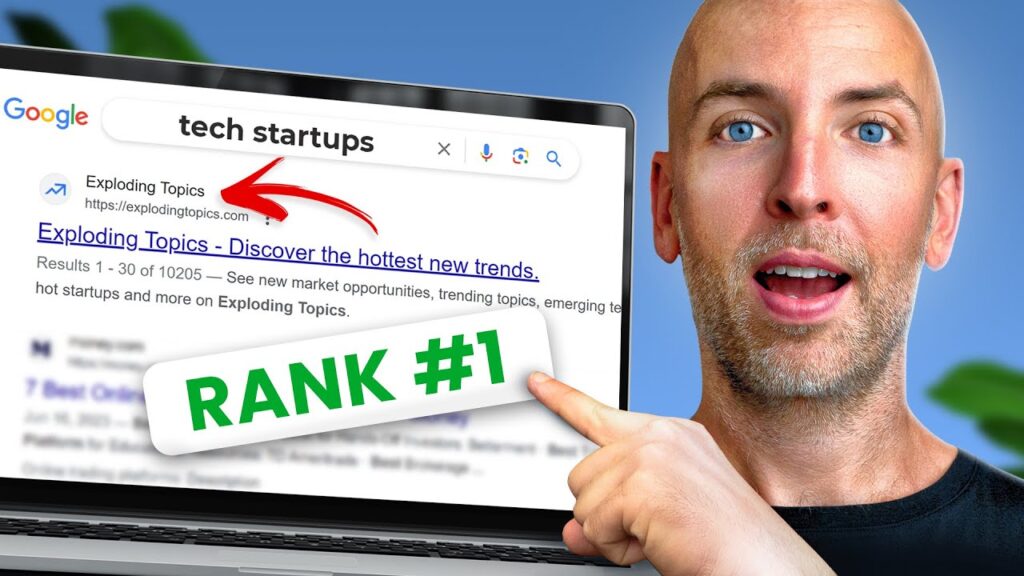Advanced SEO Techniques for Ranking High on Google
If you’ve followed the initial steps we’ve covered — identifying low-competition keywords, creating content that satisfies search intent, and optimizing for on-page SEO — you’re well on your way to climbing the Google rankings. But to truly stand out in today’s competitive landscape, you’ll need to incorporate some advanced strategies. Here’s how to take your SEO efforts to the next level.
Leverage Topic Clusters and Internal Linking
Creating topic clusters can significantly boost your SEO performance. Instead of focusing on standalone blog posts, organize your content into clusters around a core topic. For example, if your website is about skincare, you might have a core page about “Skincare Routines” and create supporting posts like “Skincare for Oily Skin,” “Winter Skincare Tips,” or “Best Products for Sensitive Skin.”
Interlink these pages strategically to create a web of content. This not only helps Google understand the relationships between your pages but also improves user navigation, keeping visitors on your site longer — a strong signal to Google.
Optimize for Featured Snippets
Featured snippets, or “position zero,” are highly coveted spots on Google. To optimize for these, structure your content to answer common questions directly. Use headers like “What is…?” or “How to…” and provide concise, clear answers in bullet points, numbered lists, or short paragraphs. For example, if your keyword is “benefits of green tea,” create a section that explicitly lists the benefits in an easy-to-read format.
Focus on Mobile Optimization
With the majority of searches happening on mobile devices, Google prioritizes mobile-friendly sites. Use a responsive design, ensure fast loading times, and keep navigation simple. A cluttered or slow site can hurt your rankings, even if your content is excellent.
Step 1: Find Five Keywords
- Importance of keywords in SEO.
- Using Google Autocomplete to discover trending, long-tail keywords.
- Example: Competitive vs. long-tail keywords (e.g., “skincare routine” vs. “skincare routine for men”).
- Exploring the related searches section for keyword ideas.
- Tools like Exploding Topics to identify low-competition, trending keywords.
Step 2: Create Amazing Content
- Focus on search intent: Aligning content with user expectations.
- Examples: Informational, commercial, and transactional intent.
- Creating unique content that offers value not found in existing results.
- Example: Case studies, tips, and in-depth comparisons.
Step 3: Optimize for On-Page SEO
- Modern on-page SEO best practices:
- Include the target keyword in the title, first 100 words, and naturally throughout the content.
- Prioritize quality over keyword stuffing.
- Example: Optimized blog post on “business trends.”
Step 4: Optimize for User Experience (UX)
- Importance of satisfying user intent for better rankings.
- UX optimization tips:
- Frontload value: Provide key information upfront.
- Readable layout: Use larger fonts, short paragraphs, and clear subheadings.
- Example: Healthline’s content design as a gold standard.
Step 5: Build Backlinks
- Role of backlinks in determining authority and trustworthiness.
- Beginner-friendly strategy: Be the Source.
- Identify niche-specific stats or data that are hard to find.
- Example: Exploding Topics’ success with “how much data is created per day.”
- Targeting low-competition, specific keywords for backlink opportunities.
Key Takeaways
- Focus on low-competition, long-tail keywords.
- Create content that satisfies search intent and stands out.
- Optimize content for both on-page SEO and user experience.
- Build backlinks by becoming the go-to source for specific information.
Call to Action
[trustindex no-registration=google]

